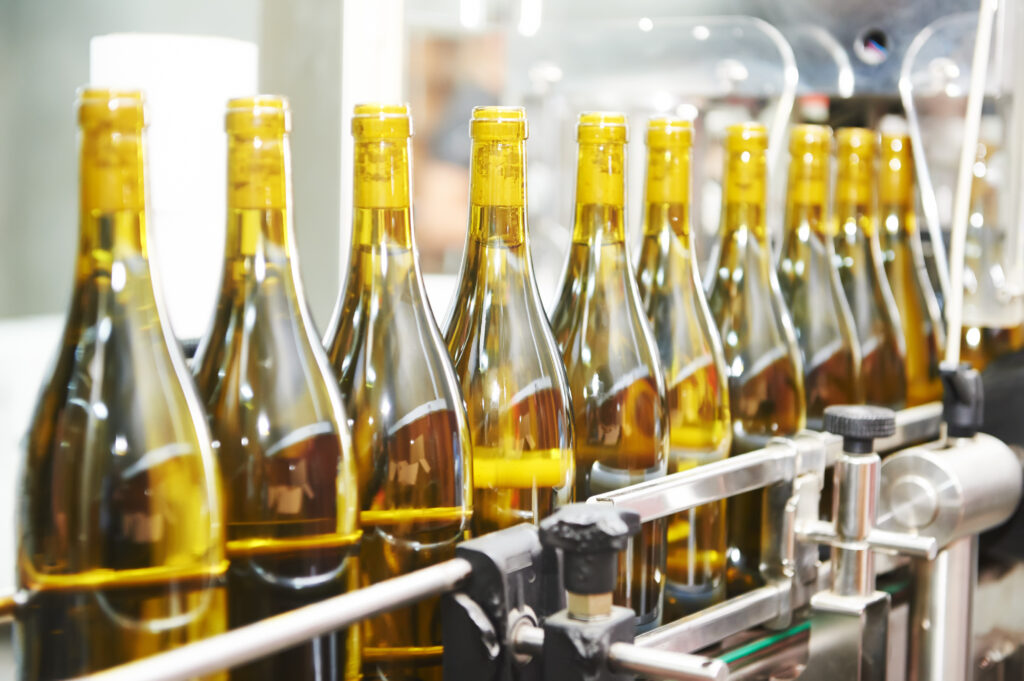Last Updated on September 29, 2023 by
The fusion of tradition and technology is fostering a new era where the effects of AI in the wine industry are profound and far-reaching.
In a Legends Behind The Craft episode, Can Algul, Co-Founder & CEO at Pubinno agrees on the numerous potentials of AI in the wine and beverage industry: For over six years. We firmly believe that AI and technology play a pivotal role in transforming the food and beverage industry…. We saw the potential it had to revolutionize the industry. Over the years we have witnessed a significant shift in the landscape with many more companies recognizing the benefits of AI. It’s truly inspiring to see numerous innovative solutions emerging to tackle long-standing issues like data scarcity and exercise rates.
The wine and beverage sector has been a testament to human ingenuity and craftsmanship for centuries. Artificial Intelligence (AI) is progressively embedding itself in this industry today, revolutionizing processes from vineyard to glass, and creating avenues for enhanced quality, outreach, and consumer experience. Let’s take a look at how the wine industry is currently making use of this technology.
Vineyard Management and Cultivation
The amalgamation of Artificial Intelligence (AI) with vineyard management and cultivation is ushering in a new era of viticulture, marked by precision, sustainability, and enhanced yield quality.
Precision Agriculture
AI is pivotal in implementing precision agriculture, allowing vineyard managers to exercise unparalleled control over the growing conditions of the vines.
By integrating AI with technologies such as drones and IoT devices, vineyards can monitor soil health, climate conditions, and plant health in real-time, enabling the optimization of irrigation, fertilization, and pest control.
Disease Prediction and Control
Another promising AI-driven innovation is predictive analytics where AI models can predict and identify diseases and infestations early by analyzing patterns and anomalies in data collected from the field.
Early detection allows for timely intervention, reducing the use of pesticides and preventing widespread damage, thereby ensuring the health and quality of the crops are uncompromised.
Climate and Weather Analysis
AI-driven meteorological analysis aids in anticipating weather conditions and potential impacts on the vineyard, allowing for proactive management strategies.
These forecasts help in planning the various stages of viticulture, such as pruning and harvesting, at optimal times, mitigating risks associated with unexpected weather changes.
Optimizing Grape Quality and Yields
AI analyzes vast datasets to determine the ideal conditions for grape growth, considering factors like soil composition, hydration, and sunlight exposure.
The insights derived help in adjusting agricultural practices to attain the best grape quality and yields, leading to the production of superior wines.
Sustainable Practices
Another thing why the wine industry should utilize AI is because of how it encourages sustainability by optimizing resource usage and reducing waste.
Through intelligent analysis using AI-driven systems, vineyards can employ water and nutrients more efficiently, promoting eco-friendly practices and reducing the environmental footprint of wine production.
Wine Production and Quality Assurance
Within the realms of production and quality assurance, AI’s influence is distinctive. It guarantees consistency and quality by predicting and enhancing the array of flavors and aromas found in wine, balancing the delicate artistry of winemaking with scientific precision. Machine learning models, a subset of AI, are diligently at work, studying intricate patterns and refining the essence of each bottle, shaping wines that meet diverse consumer preferences.

Supply Chain and Distribution
The effects of AI in the wine industry are remarkably evident in supply chain management and distribution. AI algorithms predict market demands with pinpoint accuracy, allowing for streamlined inventory management and logistics optimization. These innovations are pivotal in mitigating supply chain disruptions and uncertainties, especially vital in an industry susceptible to the whims of climate and market trends.
AI’s intricate analysis and foresight also enable manufacturers and distributors to respond proactively to market dynamics, minimizing waste and maximizing efficiency. This responsiveness is crucial in fostering resilience and adaptability in a market teeming with competition and variability.
One interesting example is how Pubinno, a San Francisco-based company, is revolutionizing the draft beer industry using AI to link and enhance the beverage supply chain for all. In the podcast episode, Can Algul explains how their team uses AI in shaping the draft beer industry: “Pubinno’s Internet of Beer solutions have been developed to design the future of draft beer by creating a fully connected digital ecosystem where draft beer operations are fully automated, standardized, trackable, hygienic, and sustainable.”
Marketing and Customer Experience
In the realms of marketing and customer relations, the ramifications of AI are multifaceted. AI-driven marketing strategies are enhancing personalized recommendations and targeted advertising, significantly boosting wine sales and consumer engagement. Virtual sommeliers and chatbots, powered by AI, are reshaping consumer interactions, offering personalized wine suggestions and enriching the overall consumer journey.
The personalized and dynamic nature of AI-driven interactions cultivates a unique and enriching consumer experience, which is paramount in establishing brand loyalty and consumer retention in a market inundated with choices.
AI in Sales Predictions and Market Trends
The foresight provided by AI is a boon for sales predictions and identifying market trends. AI analytics delve deep into consumer behaviors and market dynamics, providing invaluable insights that aid wineries and distributors in aligning production with market demands. These insights also unearth emerging markets and untapped opportunities, allowing for strategic expansion and diversification.
The effects of AI in the wine industry are instrumental in shaping production strategies and market presence, enabling industry players to stay ahead of the curve and adapt to evolving consumer palates and preferences.

AI’s revolutionary impact on the wine and beverage industry is irrefutable. From enhancing viticulture and ensuring the highest standards of quality to optimizing supply chains and crafting personalized consumer experiences, AI is at the forefront of shaping the future landscapes of wine production, marketing, and consumption.
The myriad effects of AI in the wine industry are testament to the transformative power of technology, merging seamlessly with tradition to decant a future brimming with possibilities. As advancements in AI continue to evolve, the potential for innovation and refinement within the industry is boundless.
It is imperative for winery owners, marketers, and distributors to embrace the myriad opportunities offered by AI. The convergence of tradition and technology beckons a new era of innovation and excellence in the wine and beverage sector. Tradition may be a testament to the wine industry’s strong foundations, but the future of AI holds an equally strong testament to human ingenuity and technological prowess. Maybe it’s time to consider this in your future strategies.
